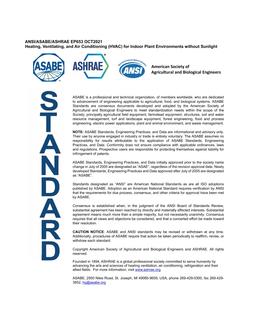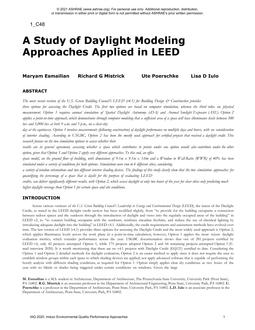The concept of sustainability and high performance is leading public and private sectors to shift their strategic direction towards integrating smart building technologies and training of operations and maintenance staff into all aspects of design and construction. This process is transforming the investments in buildings towards multiple dimensions of workforce productivity, lower cost of utilities and services, brand image, environmental compliance, eco-friendliness, and corporate and social responsibility. However, efforts to sustain the intended sustainable performance with regards to low energy use, indoor comfort and projected operating costs over the long term use of the building has become challenging. Further adoption of intelligent buildings technology that provides monitoring, tracking, benchmarking, self-diagnostics and analytics for user-friendly guidance to the trained, certified and motivated operations staff can become an asset. After Construction, a Building operates for 40 to 100+ years and so integrating Operations & Maintenance into Design, Construction & Renovations is important for maintaining a more socially and environmentally responsible built-environment over the Life cycle of Facilities. Structured training of Buildings Managers and Operators can help in operational Improvements without significant capital needs. However, the skill gaps of O&M staff for making such changes need to be bridged. The U.S. government is faced with the ever-increasing challenge of managing the facilities and infrastructure. Along the recommendations of the Federal Facilities Council, the Congress passed, "FEDERAL BUILDING PERSONNEL TRAINING ACT OF 2010 – FBPTA" which mandates development of core competencies for facilities management and O&M staff. The required skills base includes a balance of technical, business, behavioral capabilities and enterprise knowledge. The report presents strategies to develop the workforce of the future, creation of an operating environment that supports professional development, and ways to measure progress towards the sustainment of core competencies. This presentation first focuses on the extent and scope of structured classroom and on the job training to promote the life-cycle mix of preventive, predictive and reliability-centered operations and maintenance "Best Practices". Traditional "Best Practices" need to be modified and strengthened for high performance buildings. It further emphasizes progressive efforts required for transforming existing and new buildings into "Smart Buildings" by installing sensors, smart meters and building automation systems and normalizing data. Use of Green Procurement, recycling program, regular sensor and equipment calibration, tracking and computerized maintenance management systems targeting reliability, safety, occupant comfort and changing workplace needs can facilitate meeting the goals.
Citation: ASHRAE Papers CD: 2014 ASHRAE Winter Conference, New York, NY
Product Details
- Published:
- 2014
- Number of Pages:
- 8
- File Size:
- 1 file , 2.9 MB
- Product Code(s):
- D-NY-14-C031


